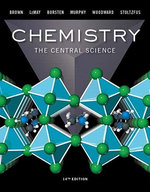?(a) Calculate the molarity of a solution made by dissolving 12.5 grams of \(\mathrm{Na}_{2} \mathrm{CrO}_{4}\) in enough water to form exactly 750 mL
Chapter 4, Problem 4.62(choose chapter or problem)
(a) Calculate the molarity of a solution made by dissolving 12.5 grams of \(\mathrm{Na}_{2} \mathrm{CrO}_{4}\) in enough water to form exactly 750 mL of solution.
(b) How many moles of KBr are present in 150 mL of a 0.112 M solution?
(c) How many milliliters of 6.1 M HCl solution are needed to obtain 0.150 mol of HCl?
Text Transcription:
Na2CrO4
Unfortunately, we don't have that question answered yet. But you can get it answered in just 5 hours by Logging in or Becoming a subscriber.
Becoming a subscriber
Or look for another answer
